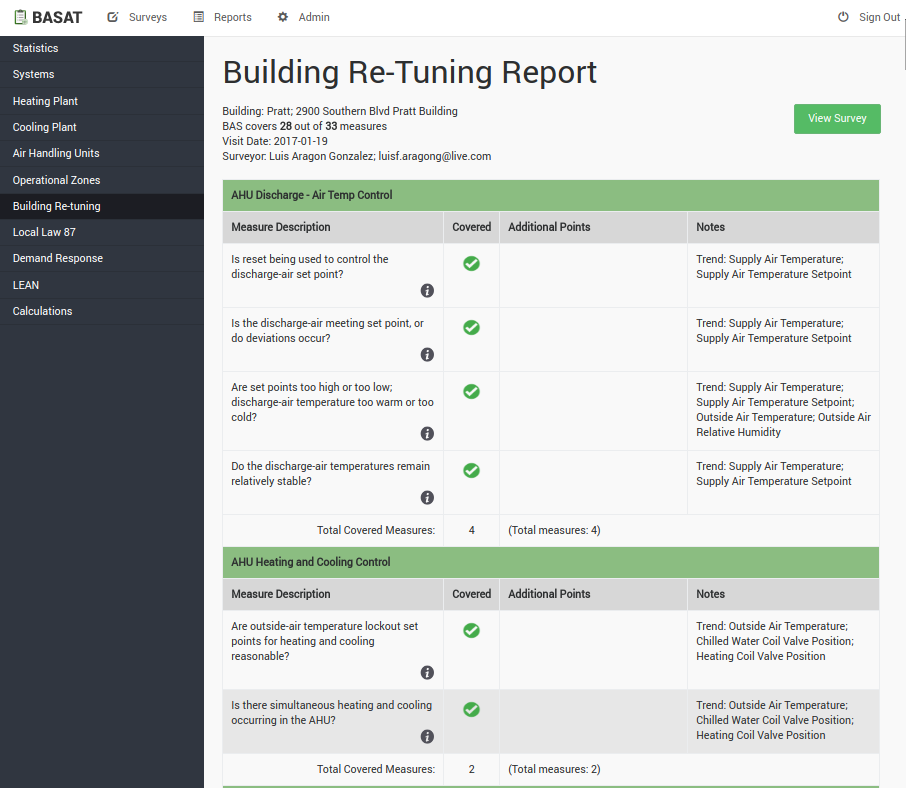The rapid advancement of building automation devices, coupled with the importance of improved environmental performance, has led to the installation of building automation systems (BAS) in an increasing number of buildings. The Building Automation System Assessment Tool (BASAT) created by the CUNY Building Performance Lab seeks to provide a basis for a standardized approach to evaluating existing building systems relative to desired BAS functionality and performance goals.
BASAT can provide insight into any specific controls optimizations of, or measures that can be realized with, the current BAS configuration; as well as an indication of the possible measures given additions of specific sensors, actuators and points to the BAS. The tool consists of the following:
- Input sections in the form of survey lists, in which the user selects the availability of sensors based upon examination of the BAS front-end and operator knowledge of the system
- System-, equipment-, and protocol-specific results sections in which the results of the survey are computed based on a decision matrix that determines the availability of measures, control strategies and controls optimizations.
BASAT can be used to evaluate the capabilities of a BAS in two ways:
- Determines what capabilities or measures are available to the BAS for specific building systems (e.g., Cooling Plant, Heating Plant, etc.) or equipment (e.g., AHU, Chiller, etc.) given the current installed infrastructure.
- Provides an indication of the level of compliance with a specific protocol that can be achieved with existing BAS infrastructure through several control strategies (e.g., Fault Detection Diagnostics, Demand Response, NYC Local Law 87).
Systems and equipment that can be assessed with BASAT include:
- Cooling Plant
- Heating Plant
- Air Handler Unit
- Zone
- Ambient
Protocols through which BASAT can present the results of an assessment are:
- Building Re-tuning (BRT) (Pacific Northwest National Lab)
- Lean Energy Analysis (LEAN)
- Demand Response (DR) (Lawrence Berkeley National Laboratory)
- NYC Local Law 87 (LL87) (PlaNYC Green Buildings & Energy Efficiency)
- Fault Detection Diagnostics (FDD)


